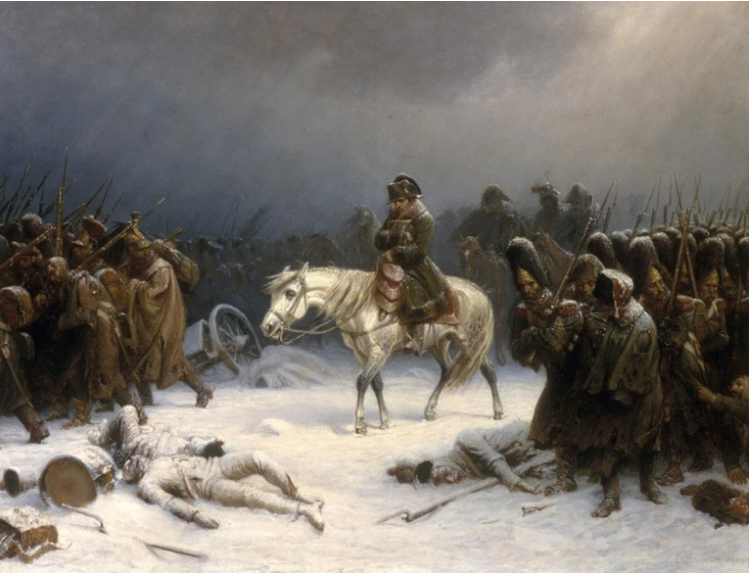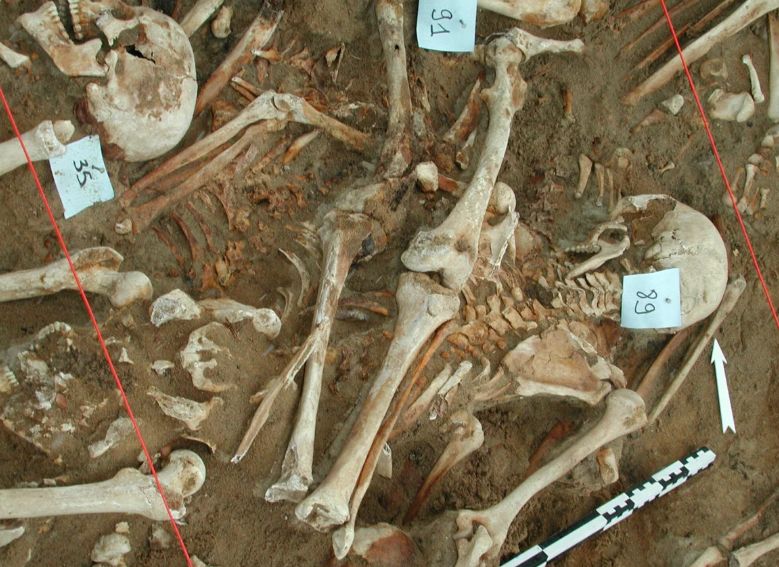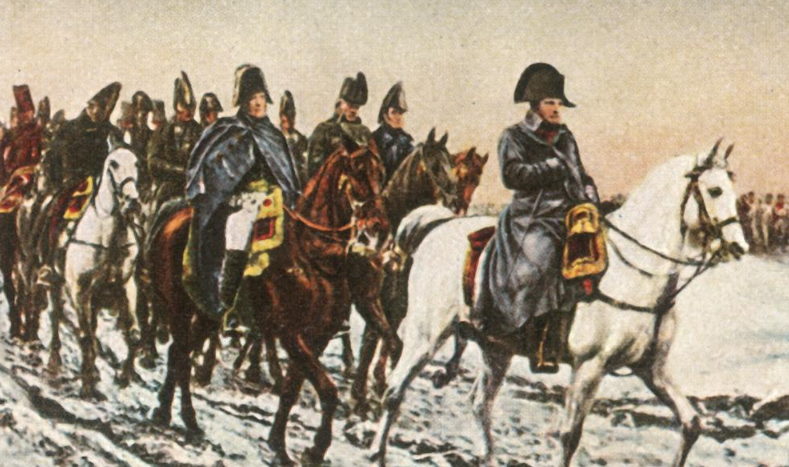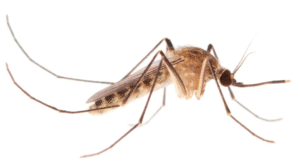How Napoleon’s Army Met Its Doom: DNA Uncovers Hidden Diseases Behind the 1812 Disaster

New genetic research has revealed that Napoleon Bonaparte’s army may have fallen not only to freezing temperatures and starvation during the 1812 Russian campaign — but also to deadly bacterial infections. DNA analysis has identified two surprise diseases that deepened the tragedy of one of history’s most infamous military defeats.
The Mystery Behind Napoleon’s Doomed March
In the winter of 1812, one of history’s most ambitious military campaigns ended in catastrophe. Napoleon Bonaparte’s Grand Armée, a force of more than 600,000 soldiers, marched into Russia with the goal of forcing Tsar Alexander I into submission. Yet only a small fraction of those men returned alive.
Historians have long blamed starvation, freezing temperatures, and exhaustion for the army’s collapse during the long retreat from Moscow. But new research suggests there was another deadly, invisible enemy at work: disease.
In a groundbreaking study published in Current Biology, scientists have used DNA analysis of soldiers’ remains to uncover two bacterial infections that likely contributed to the devastating death toll. Their discovery paints a far more complex and haunting picture of how one of the greatest armies in history was brought to its knees.
A March Through Hell: The Harsh Reality of 1812
By the time Napoleon’s forces reached Moscow in September 1812, they were already weakened by supply shortages and guerrilla attacks. The Russian strategy of scorched earth warfare — burning villages, crops, and resources — ensured that the invading troops found little food or shelter.
When the French finally entered Moscow, the city was nearly deserted and burned. Winter arrived soon after, with temperatures dropping to -30°C (-22°F). Soldiers were forced to march hundreds of miles back through snow, pursued by Russian forces and ravaged by hunger.
Out of the 600,000 troops who began the invasion, over 300,000 perished — many left frozen on the roadside, others buried in mass graves.
For centuries, historians have pointed to typhus and trench fever, spread by lice, as major killers during the retreat. Now, thanks to advances in genomic technology, researchers can finally confirm and expand on those suspicions — revealing an even deeper layer to the disaster.

Unearthing the Dead: Modern Science Meets History
In this recent study, scientists examined DNA extracted from the teeth and bones of soldiers buried in Lithuania, one of the regions along Napoleon’s retreat path. The researchers were led by an international team of archaeologists, microbiologists, and geneticists determined to identify the pathogens that might have infected the troops.
Using next-generation DNA sequencing, they were able to reconstruct ancient bacterial genomes — providing the most detailed microbial record ever obtained from Napoleonic remains.
What they found went beyond what historians had expected.
Two Hidden Killers: Typhus and Trench Fever Confirmed
The DNA results confirmed the presence of Rickettsia prowazekii, the bacterium responsible for epidemic typhus, and Bartonella quintana, which causes trench fever.
Both diseases are spread by body lice and thrive in cold, crowded, and unhygienic conditions — exactly what Napoleon’s army faced during the retreat.
Typhus: The Winter Plague
Typhus is an infection that causes high fever, severe headache, muscle pain, and rash. In untreated cases, it can lead to delirium, organ failure, and death. During the 19th century, typhus was common in wars and famines where sanitation was poor.
For Napoleon’s soldiers, already starving and freezing, typhus would have been catastrophic. The disease spreads quickly in confined spaces, such as military camps or carts filled with the wounded.
Trench Fever: The Slow Destroyer
Bartonella quintana, the agent of trench fever, causes recurring fevers, pain, and extreme fatigue. It doesn’t kill as fast as typhus, but it can incapacitate large numbers of soldiers, making them unable to fight or march.
Together, these two infections would have crippled Napoleon’s army — making it nearly impossible for the sick and weak to survive the long, frozen journey back to France.
Beyond the Known: Discovering More Hidden Diseases
Previous studies from 2006 used PCR (polymerase chain reaction) technology to confirm the presence of these pathogens. However, PCR only amplifies known DNA sequences, meaning it can detect diseases that researchers expect — but not those they don’t.
The new study’s whole-genome sequencing approach, however, allowed scientists to scan for unexpected pathogens, broadening the search beyond what was historically assumed.
This method revealed additional genetic traces of bacterial species related to gut infections and dysentery, suggesting that multiple diseases may have coexisted, creating a deadly syndrome of starvation, infection, and exposure that decimated the troops.
“It’s like piecing together a biological time capsule,” said Anne Stone, a genetic anthropologist at Arizona State University. “We’re finally beginning to understand how complex this tragedy really was.”

A New Perspective on the 1812 Catastrophe
The traditional narrative of Napoleon’s failed Russian campaign emphasizes logistical and environmental causes: supply line collapse, the Russian winter, and military resistance. But the addition of infectious disease adds an important dimension to the story.
According to historians, as soldiers’ immune systems weakened from starvation, they became more vulnerable to lice-borne pathogens. Thousands fell sick every day. Entire regiments became too weak to march, forcing commanders to abandon the ill on the roadside.
By the time the army crossed the Berezina River — one of the final barriers to safety — only tens of thousands remained. The rest had succumbed to the combined assault of cold, hunger, and disease.
How DNA Forensics Rewrites History
This discovery highlights how ancient DNA (aDNA) analysis is revolutionizing historical research. Once used primarily for studying early humans and extinct animals, aDNA now offers new insights into epidemics and battlefield archaeology.
The remains analyzed in this study were found in mass graves in Vilnius, Lithuania, uncovered during urban construction. Genetic analysis allowed scientists to reconstruct not only the soldiers’ identities but also the pathogens that killed them.
The findings confirm that infectious disease played a far greater role in historical military defeats than previously understood.
Other studies using similar methods have identified diseases such as plague, cholera, and smallpox in ancient remains, reshaping our understanding of how microbes influenced world events.
The Human Cost of Napoleon’s Ambition
Napoleon’s march into Russia was meant to cement his domination over Europe. Instead, it became a monumental disaster that marked the beginning of his downfall.
Of the 600,000 soldiers who crossed into Russia, fewer than 100,000 returned alive. Most perished not in battle, but in the icy wilderness — their bodies left scattered across Eastern Europe.
Now, two centuries later, modern science has revealed that these soldiers also fell victim to invisible enemies. The bacteria identified in their remains provide chilling evidence that the true battle was biological as much as military.
As historian David Chandler once wrote, “Napoleon did not lose to Russia — he lost to nature.” This new research suggests that he also lost to disease.
What Made the 1812 Epidemic So Deadly
Several factors combined to make Napoleon’s retreat a perfect storm for epidemic disease:
- Extreme Cold: Subzero temperatures weakened immune systems and froze medical supplies.
- Poor Hygiene: Soldiers went weeks without changing clothes or washing, allowing lice infestations to spread rapidly.
- Starvation: Lack of food lowered resistance to infection.
- Overcrowding: Camps and wagons filled with the wounded provided breeding grounds for bacteria.
- Limited Medical Knowledge: Germ theory had not yet been discovered — doctors didn’t understand how disease spread.
Together, these conditions created an environment where even minor infections could become fatal.

From Battlefields to Biology: The Legacy of a Tragedy
The Napoleonic Wars killed millions across Europe, but the Russian campaign stands out as one of the worst military disasters in history. What makes it even more haunting is that many of its victims were not killed by bullets or bayonets — but by microbes invisible to the naked eye.
Modern researchers see parallels between the 1812 disaster and later conflicts. During World War I, for example, trench fever and typhus again became widespread among soldiers, echoing the same pattern of disease and hardship seen under Napoleon.
This continuity underscores how biology has always been intertwined with human conflict — shaping not only who wins or loses wars, but also how civilizations evolve.
What the Study Means for Modern Science
Beyond rewriting history, the study also demonstrates the power of genomic archaeology — the ability to extract information about ancient epidemics from skeletal remains.
These methods can help scientists track how pathogens evolve and reemerge over time, offering lessons for public health today. Understanding how bacteria such as Rickettsia and Bartonella adapt and spread could inform modern disease prevention strategies, especially in crisis zones and refugee camps where living conditions mirror those of historical armies.
“Every skeleton tells a story,” said one of the researchers. “And sometimes, those stories still hold lessons for the present.”
The Broader Implications: Rethinking Historical Epidemics
The findings also remind historians that disease has always been a silent force in shaping empires. From the Black Death that reshaped medieval Europe to malaria that hampered colonial expansion, microbes have often decided the fates of nations more effectively than armies or kings.
Napoleon’s campaign is just one chapter in this biological history — a cautionary tale about how human ambition can be undone by the smallest forms of life.
1️⃣ What new discovery did DNA analysis reveal about Napoleon’s 1812 army disaster?
DNA testing of soldiers’ remains revealed that many troops were infected with trench fever and typhus, both spread by lice. These diseases severely weakened the army, contributing to massive deaths during the retreat from Russia.
2️⃣ How did disease contribute to Napoleon’s defeat in 1812?
While freezing temperatures and starvation are well-known causes, diseases like typhus, dysentery, and trench fever spread rapidly in the army’s poor hygiene conditions. The illness killed thousands before they could even fight, leading to the army’s collapse.
A Tragic Legacy Frozen in Time
Two hundred years later, the mass graves of Napoleon’s soldiers stand as a somber reminder of the cost of war. Their discovery — and the microscopic clues preserved within their bones — bridges the gap between past and present, science and history.
The same soldiers who marched under the banner of empire are now helping scientists uncover the hidden role of disease in human history.
It’s a story not just of military failure, but of biology, survival, and the fragile limits of human endurance.
Conclusion: Science Gives Voice to the Fallen
The new DNA analysis does more than solve an old mystery — it restores humanity to the nameless dead of Napoleon’s doomed campaign. By uncovering the pathogens that helped destroy the Grand Armée, researchers have shown that science can give voice to history’s forgotten victims.
In the end, Napoleon’s grand vision of conquest was defeated not only by Russia’s winter, but by microscopic adversaries far older and more ruthless than any general.
Their story — told now through the language of DNA — reminds us that the smallest enemies often leave the biggest marks on history.
Internal Linking Suggestions:
- Link “Napoleon’s 1812 Russian campaign” to European History or Military Conflicts category.
- Link “ancient DNA research” to Science & Archaeology section.
- Link “epidemic diseases” to Health & Medicine category.
- Link “typhus and trench fever” to an article about infectious disease history.






